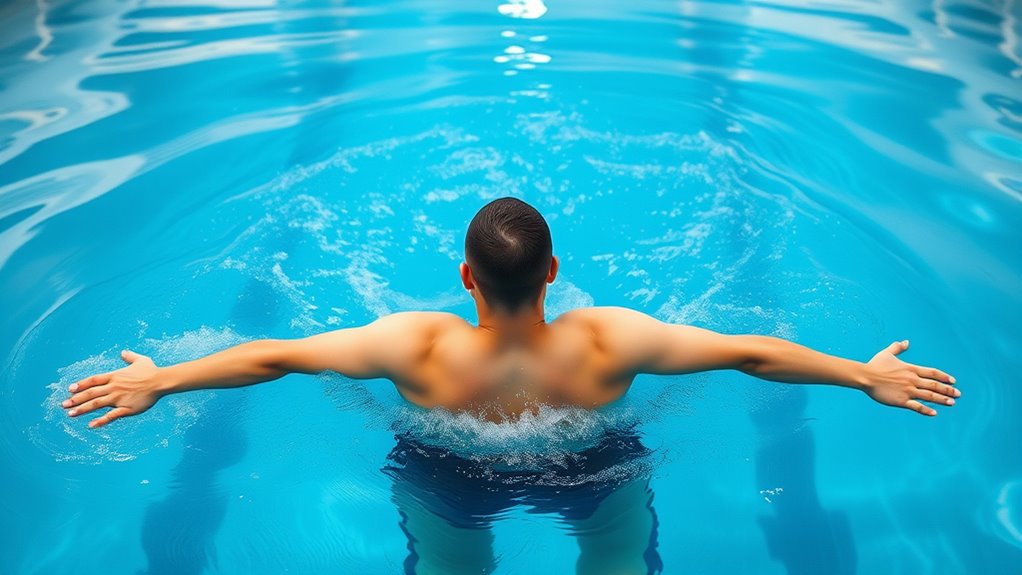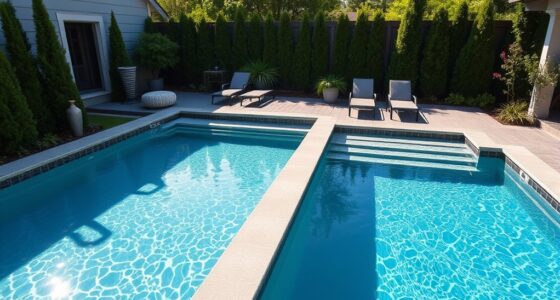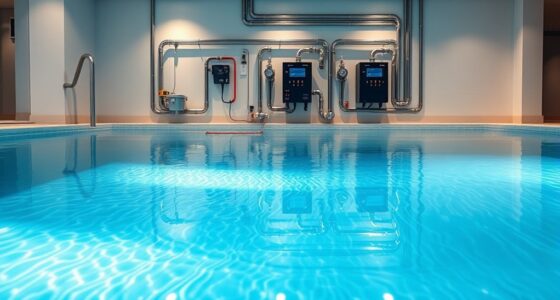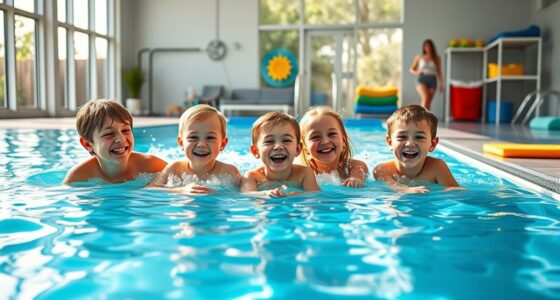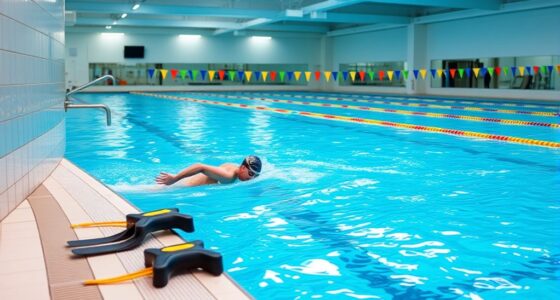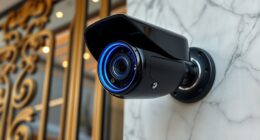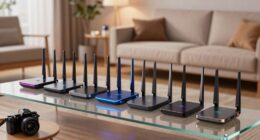To fix five common swim mistakes quickly in an endless pool, focus on maintaining proper body alignment by keeping your head aligned with your spine and engaging your core. Improve your breathing by exhaling fully underwater and practicing bilateral breaths. Streamline your arms with smooth, mindful entry and pull with steady, controlled movements. Rethink your kick—small, relaxed, and from your hips—and hold a tight glide after each push-off. Keep these tips in mind, and you’ll swim more efficiently in no time.
Key Takeaways
- Maintain proper body alignment by keeping your head, hips, and legs in a straight line to reduce drag.
- Exhale fully underwater and practice bilateral breathing for consistent, relaxed breaths.
- Enter water with fingertips, keep arms aligned during the pull, and engage back muscles for efficient propulsion.
- Use steady, small flutter kicks from the hips with relaxed ankles to maximize propulsion and conserve energy.
- Glide fully after push-offs and breaths, maintaining a streamlined position to minimize water resistance.
Poor Body Position and Alignment
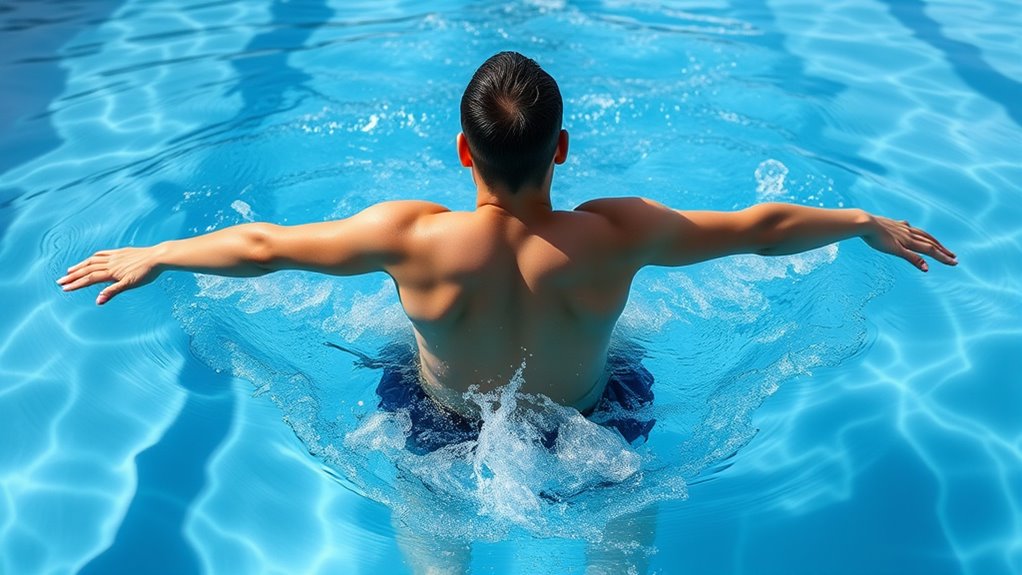
Poor body position and alignment can substantially impact your swimming efficiency in an Endless Pool. When your body isn’t properly aligned, you create unnecessary drag that slows you down and wastes energy. If your hips sink or rise too high, it disrupts your streamlined shape, making every stroke less effective. You might find yourself overcompensating with excessive arm or leg movements, which tires you out faster. To improve, focus on keeping your head in line with your spine and engage your core muscles to maintain a horizontal position. Ensuring a balanced, streamlined posture minimizes resistance and allows you to move through the water smoothly. Remember, even small adjustments in body alignment can lead to significant gains in speed and endurance.
Inefficient Breathing Techniques
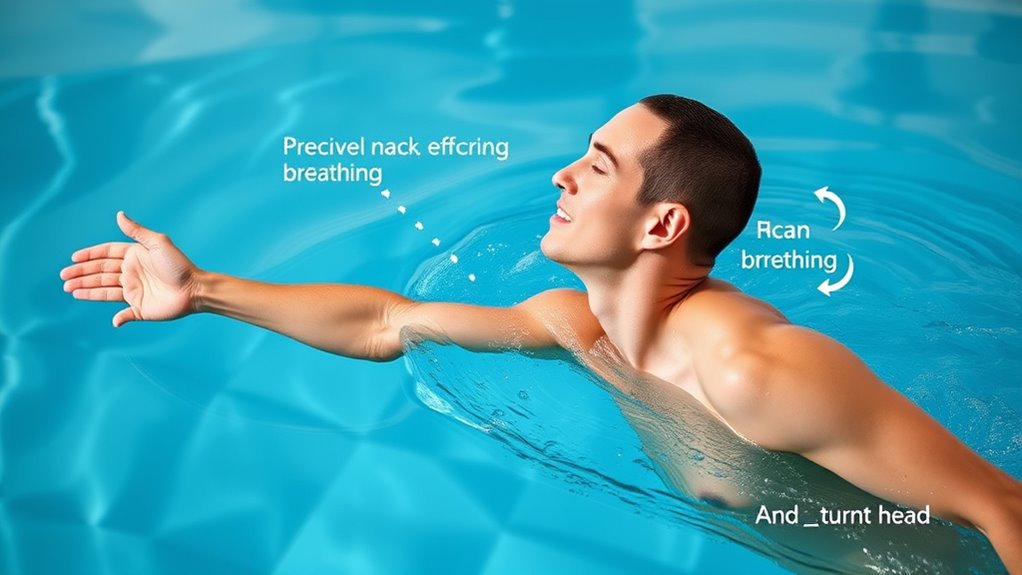
Are you struggling to breathe efficiently during your swim in the Endless Pool? Poor breathing techniques can slow you down and cause fatigue. To improve, focus on exhaling fully underwater so you’re ready for your next inhale. Avoid shallow or hurried breaths that disrupt your rhythm. Instead, breathe calmly and consistently, turning your head just enough to clear your mouth and nose without twisting your neck excessively. Keep your body aligned to prevent unnecessary movement, which wastes energy. Practice bilateral breathing—alternating sides—to promote balance and reduce fatigue on one side. Remember, controlled and deliberate breaths help you stay relaxed and maintain a steady stroke rate. Incorporating proper breathing techniques into your routine can significantly enhance your overall swimming efficiency. Improving your breathing technique will boost your endurance and overall efficiency in the water.
Incorrect Arm Entry and Pulling Motion

Incorrect arm entry and pulling motion can substantially hinder your swimming efficiency in the Endless Pool. When your arm enters the water at the wrong angle or pulls incorrectly, you lose momentum and create unnecessary drag. To improve, focus on these key points:
- Enter the water smoothly with fingertips first, aiming for a streamlined entry.
- Keep your arm aligned with your body during the pull to maximize power.
- Engage your back and shoulder muscles rather than relying solely on your arms.
- Maintain a steady, controlled pull through the water, avoiding rushing or jerky movements.
- Developing proper technique can help you optimize your stroke and prevent common mistakes.
Faulty Kick Mechanics
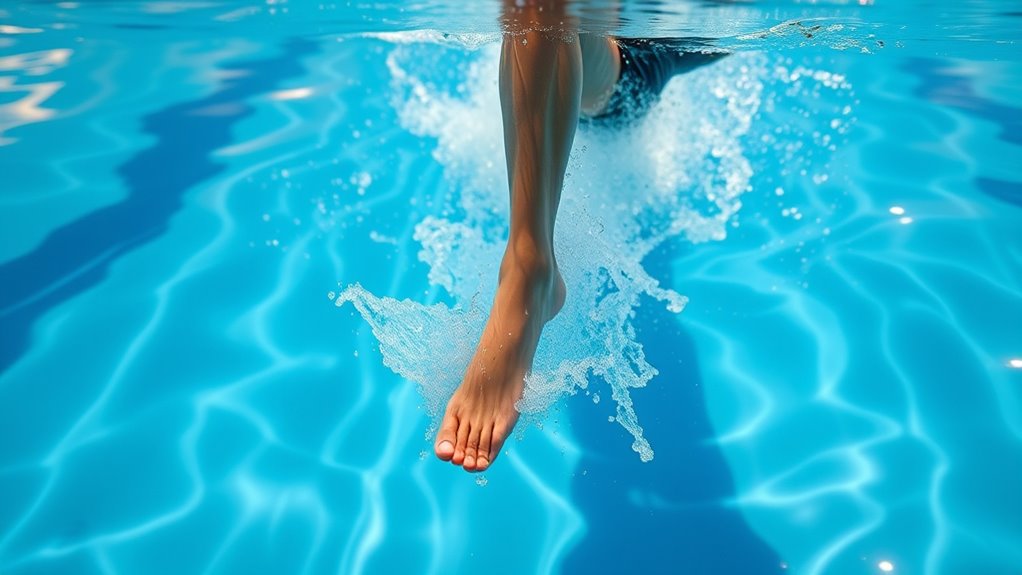
Faulty kick mechanics can considerably reduce your swimming efficiency in the Endless Pool by wasting energy and increasing drag. If your kicks are too shallow, choppy, or inconsistent, you’ll tire quickly and slow down. Overkicking can cause unnecessary fatigue, while underkicking reduces propulsion. Improper ankle flexibility or stiff, rigid legs diminish the effectiveness of your kicks, making them less powerful. Additionally, a kick that’s too wide or narrow disrupts your balance and rhythm. To fix this, focus on maintaining a steady, small, and continuous flutter kick from your hips, not your knees. Keep your ankles relaxed and flexible, and ensure your kicks are synchronized with your arm movements. Improving your kick mechanics will help you conserve energy and glide smoothly through the water.
Lack of Streamlining and Proper Glide
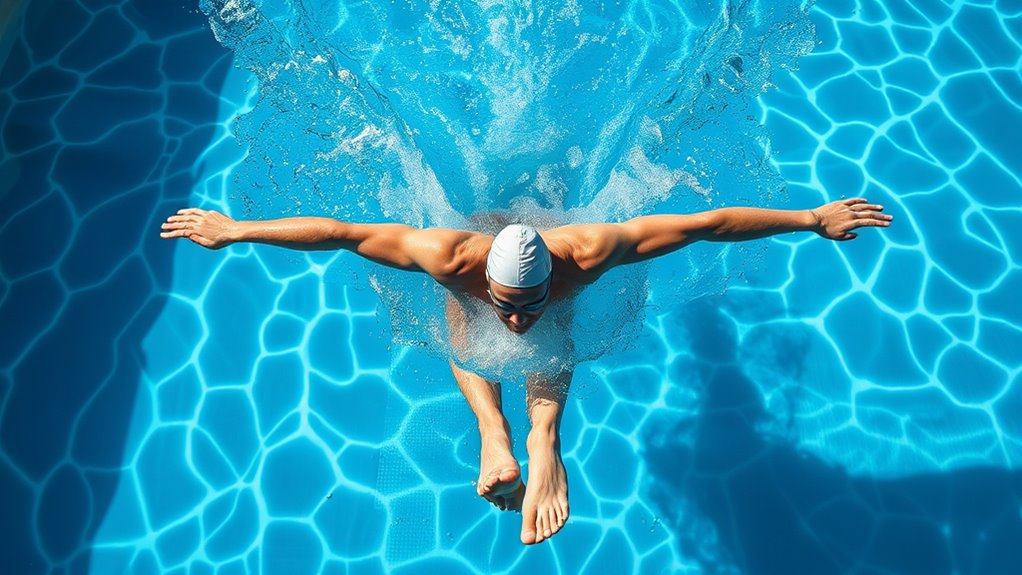
Without proper streamlining and glide, your swimming becomes inefficient, causing you to work harder and tire faster. When you neglect to streamline, you increase water resistance, making each stroke more exhausting. To improve, focus on maintaining a tight, elongated body position after each push-off or breath. This helps you glide smoothly through the water, conserving energy. Remember these key points:
- Keep your body aligned from head to toes.
- Extend your arms fully during glide phases.
- Minimize unnecessary movements, like excessive leg kick or arm flail.
- Use your core to maintain a streamlined posture.
- Incorporating proper tuning techniques can further enhance your swimming efficiency by optimizing your body’s natural movement and reducing resistance.
Frequently Asked Questions
How Can I Track My Progress Effectively in an Endless Pool?
You can track your progress effectively by recording your swim times regularly and noting improvements in your stroke efficiency. Use a waterproof smartwatch or a swim tracker to monitor distance, pace, and stroke count during each session. Take videos occasionally to analyze your technique. Set specific goals, and review your data weekly to see trends. Consistent tracking motivates you and helps identify areas needing improvement.
What Equipment Can Help Improve My Stroke Technique?
Did you know that using equipment can improve stroke efficiency by up to 20%? To enhance your technique, consider adding resistance bands for strength, a tempo trainer to maintain consistent pace, and swim paddles to build arm strength and refine your stroke. These tools give you immediate feedback and help identify areas needing improvement, making your training more effective and faster. Incorporate them regularly, and watch your form improve quickly.
How Often Should I Practice to See Noticeable Improvements?
You should aim to practice at least three to five times a week to see noticeable improvements in your stroke technique. Consistency is key, so try to stick to a regular schedule that fits your lifestyle. Each session doesn’t have to be long—30 to 60 minutes is sufficient—focused on drills and technique. Over time, this routine will help you build muscle memory and refine your skills effectively.
Are There Specific Drills to Correct Common Stroke Mistakes?
Think of your stroke as tuning a guitar—you need specific drills to hit the right notes. To correct common mistakes, try drills like single-arm swimming to improve arm entry, or catch-up drill to enhance stroke timing. Focus on slow, controlled reps to build muscle memory. These targeted exercises help you identify and fix flaws quickly, much like tuning a guitar ensures each string sounds perfect.
Can Video Analysis Assist in Refining My Swimming Technique?
Yes, video analysis can substantially help refine your swimming technique. By recording your strokes, you can visually identify flaws and see how your body moves through the water. This immediate feedback allows you to make targeted adjustments quickly. Watching yourself swim helps you understand what needs improvement, and sharing videos with a coach can accelerate your progress. Overall, it’s a powerful tool for fast, effective technique correction.
Conclusion
By mastering body position, breathing, arm movement, kicking, and streamlining, you’ll see swift strides in your swim skills. Fixing these flaws fuels faster, freer, and more fluid strokes, transforming your endless pool sessions into effective, enjoyable experiences. Don’t delay—diligently develop, deepen, and refine these fundamentals. With consistent commitment and clever corrections, you’ll conquer common mistakes and confidently cruise through your current and future swim challenges. Keep practicing, perfecting, and propelling yourself toward pool perfection!
